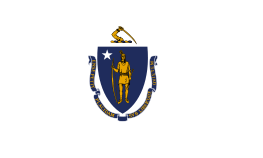James Parker (Massachusetts)
James Parker (1768 – November 9, 1837) was an American politician.
James Parker | |
|---|---|
| Member of the U.S. House of Representatives from Massachusetts | |
| In office March 4, 1813 – March 3, 1815 March 4, 1819 – March 3, 1821 | |
| Preceded by | 19th District created in 1813 Thomas Rice (18th) |
| Succeeded by | Samuel S. Conner (19th) 18th District eliminated in 1820 |
| Constituency | 19th district (1813–15) 18th district (1819–21) |
| Personal details | |
| Born | 1768 Boston, Province of Massachusetts Bay, British America |
| Died | November 9, 1837 (aged 68–69) Gardiner, Maine, U.S. |
| Nationality | American |
| Political party | Democratic-Republican |
| Occupation | Physician |
Parker was born and educated in Boston in the Province of Massachusetts Bay. He studied medicine, became a doctor, and started a practice in Gardiner in Massachusetts' District of Maine.
In addition to practicing medicine, Parker was an inventor, and received a patent for an improved brick and tile making process.
Active in politics as a Democratic-Republican, he served in the Massachusetts State Senate from 1811 to 1812. Parker represented Massachusetts's 19th district in the United States House of Representatives from 1813 to 1815, and the 18th district from 1819 to 1821.
In 1824 Parker was chosen as a presidential elector pledged to support John Quincy Adams.
Parker died in Gardiner on November 9, 1837 and was buried at Gardiner's Oak Grove Cemetery.
References
Sources
- United States Congress. "James Parker (id: P000060)". Biographical Directory of the United States Congress.
| U.S. House of Representatives | ||
|---|---|---|
| Preceded by None; district created. |
Member of the U.S. House of Representatives from Massachusetts's 19th congressional district March 4, 1813 – March 3, 1815 |
Succeeded by Samuel S. Conner |
| Preceded by Thomas Rice |
Member of the U.S. House of Representatives from Massachusetts's 18th congressional district March 4, 1819 – March 3, 1821 |
Succeeded by None; Maine District split |

